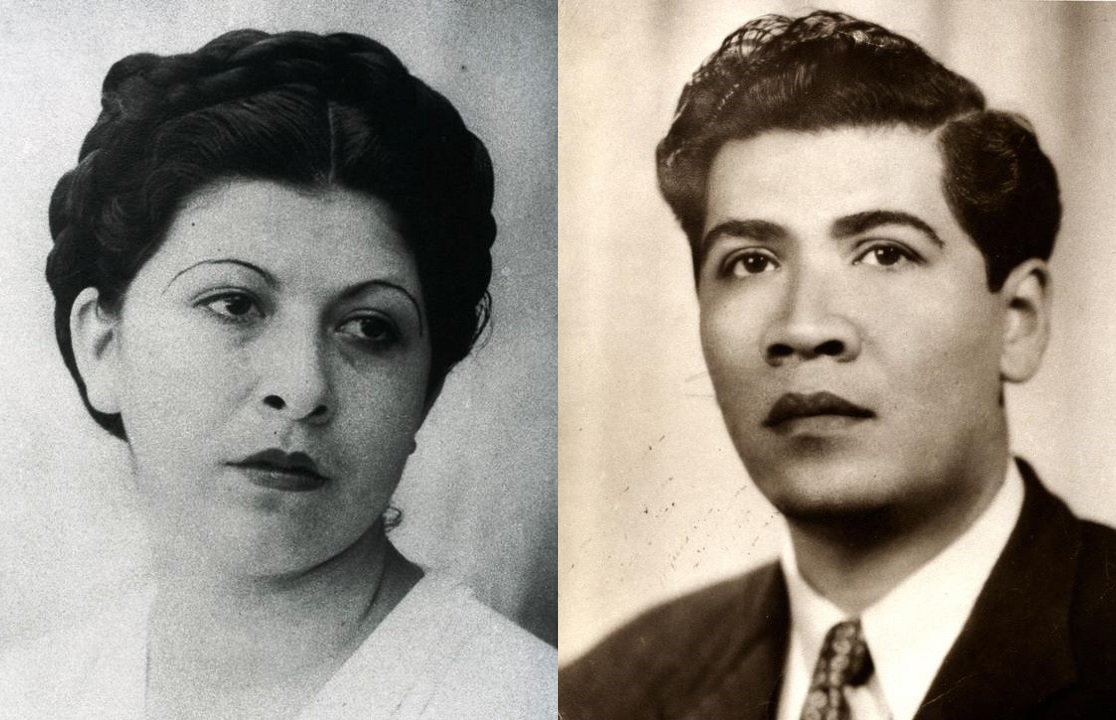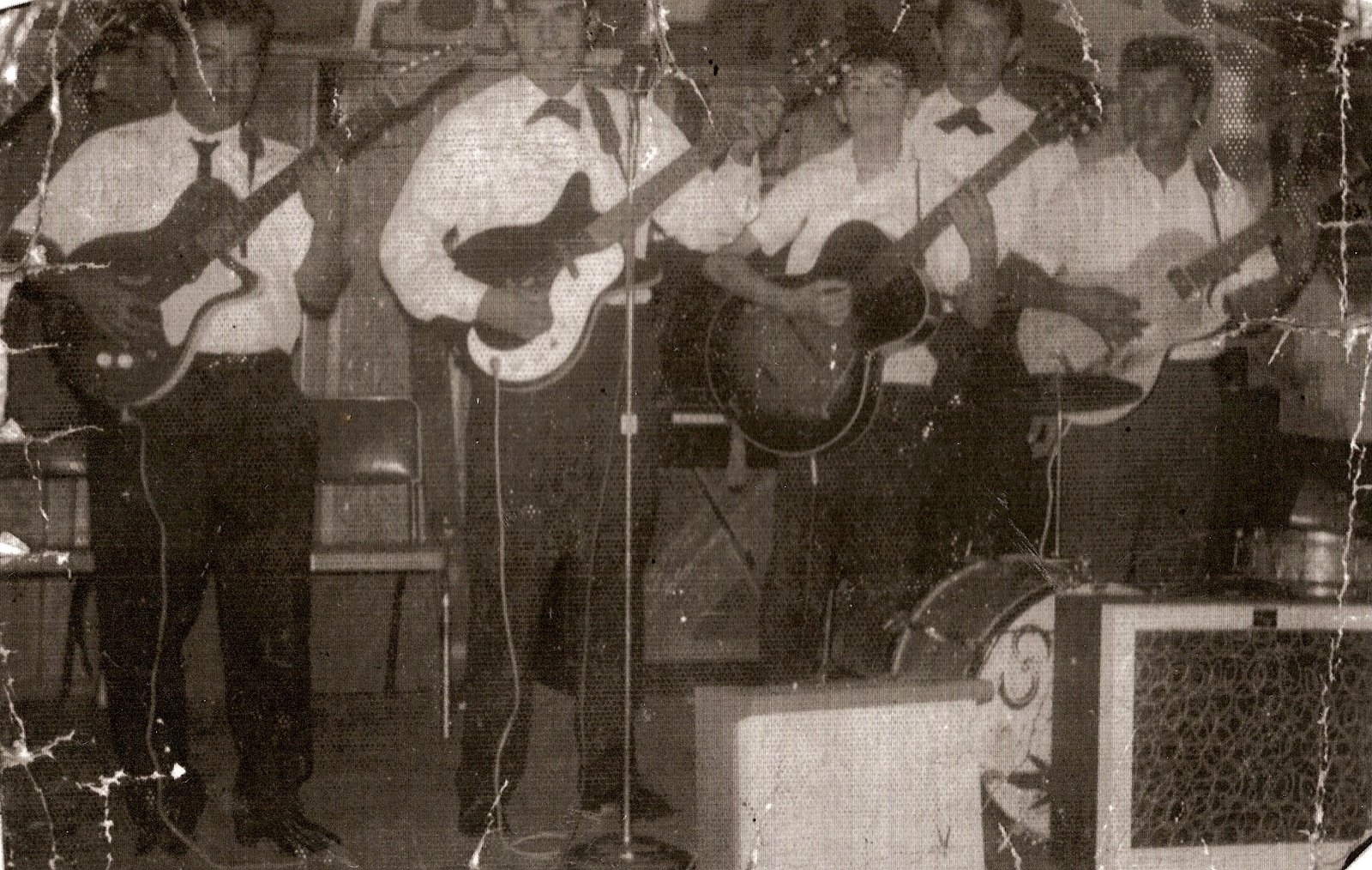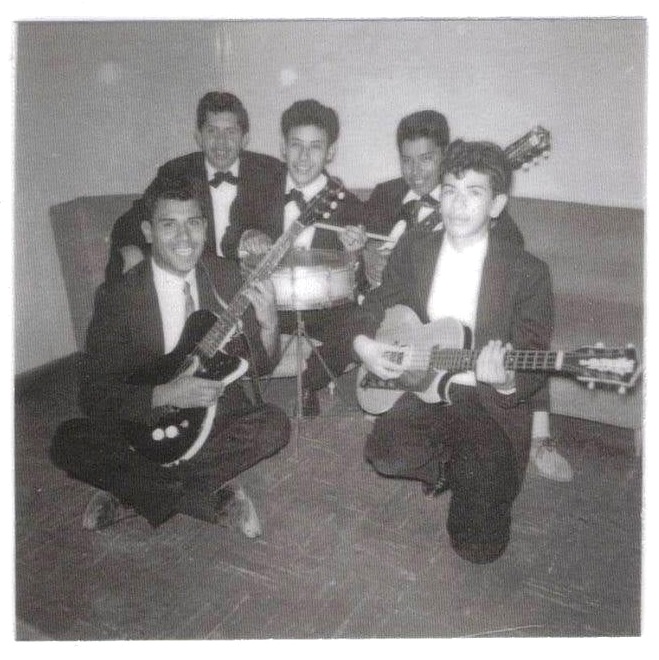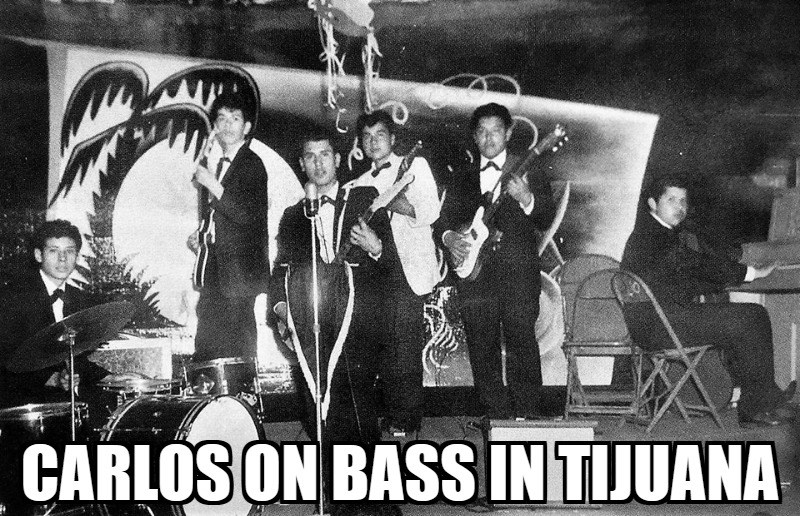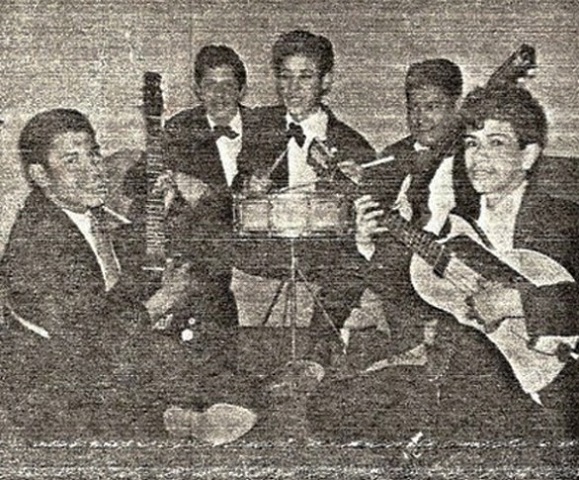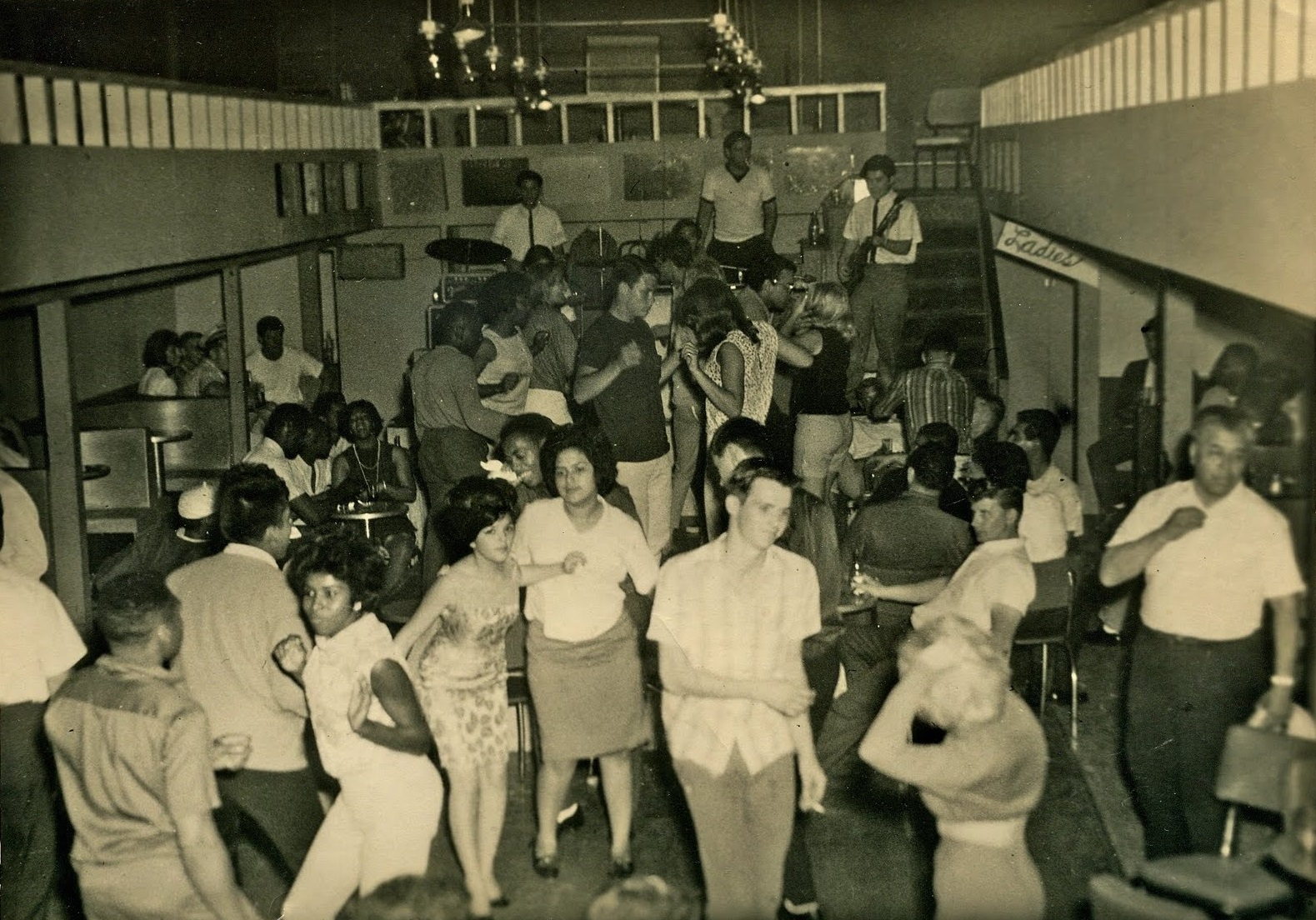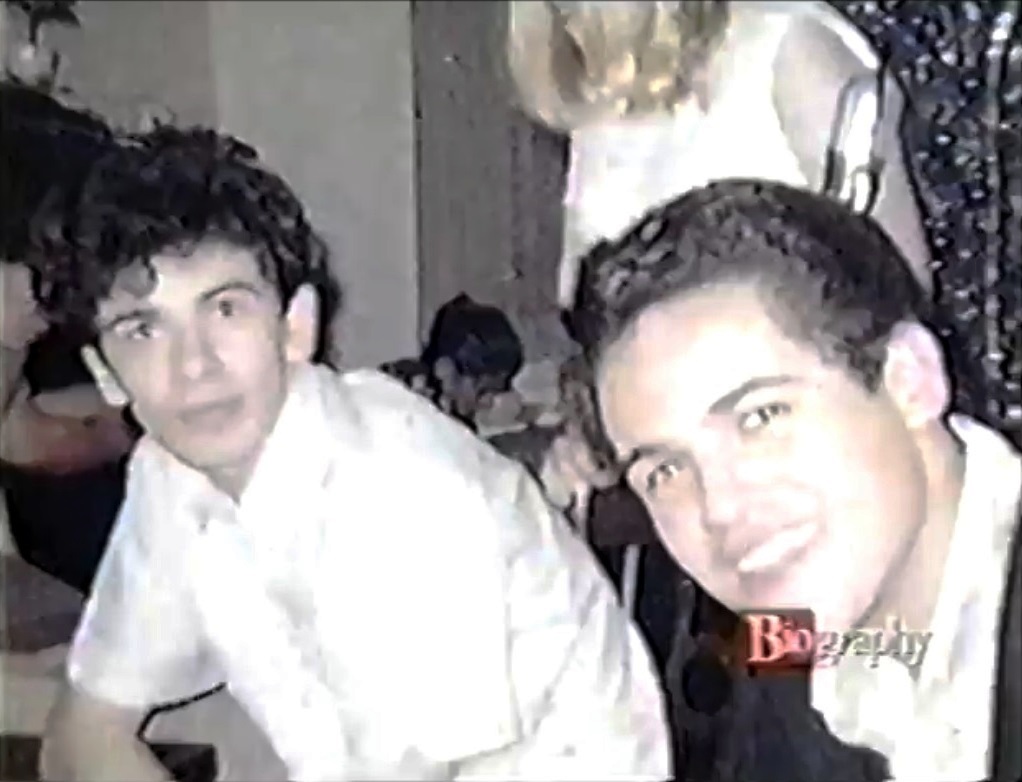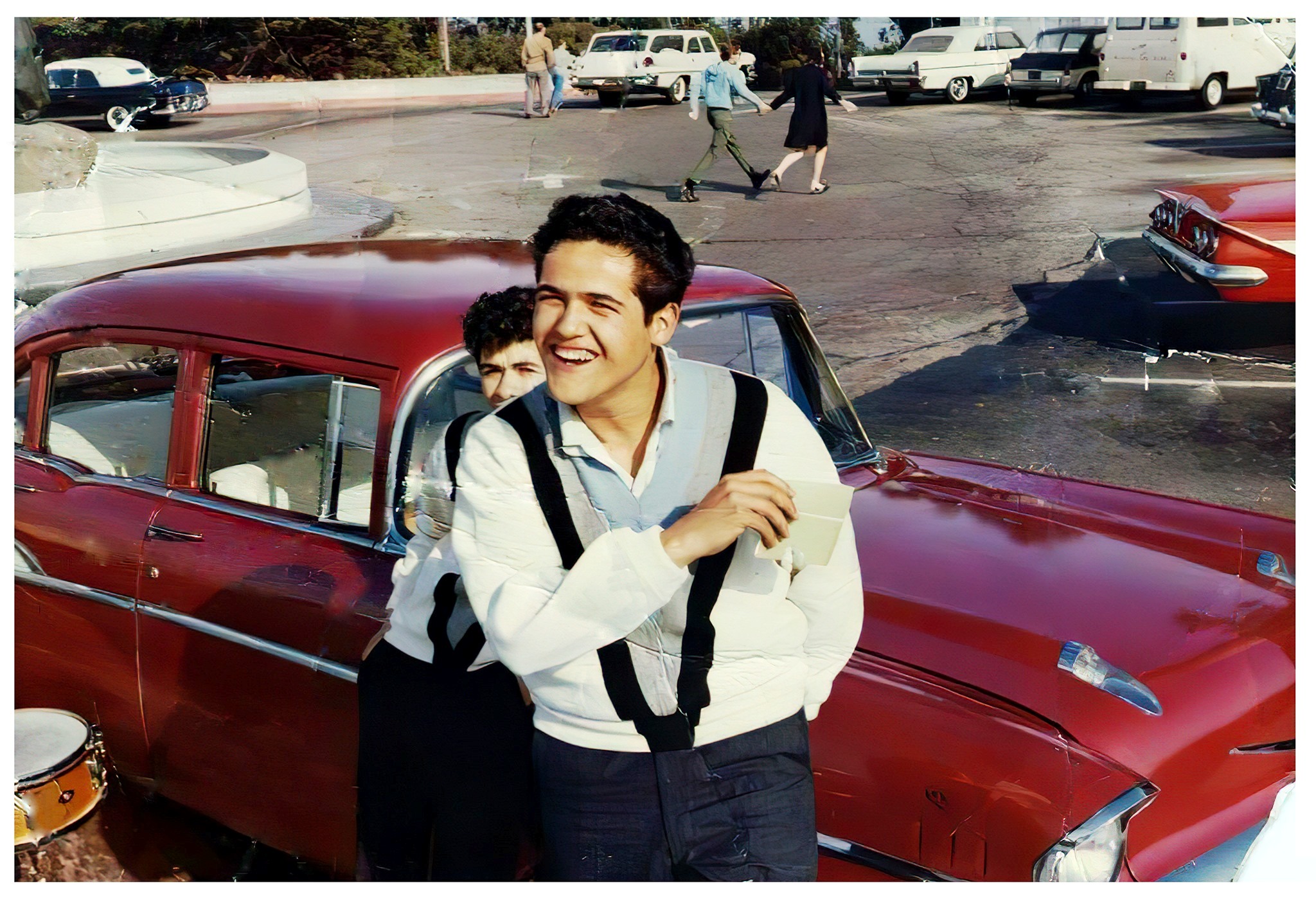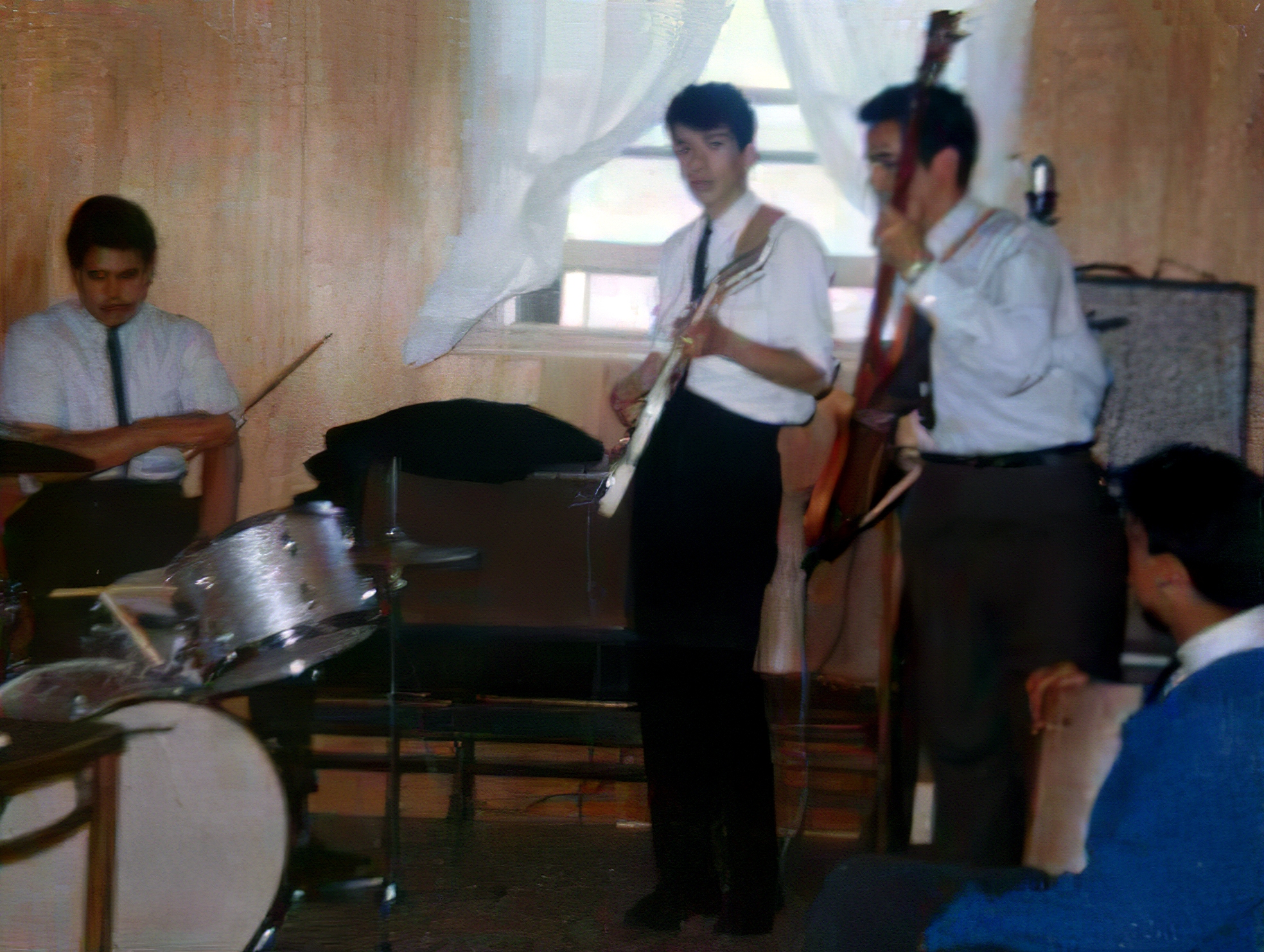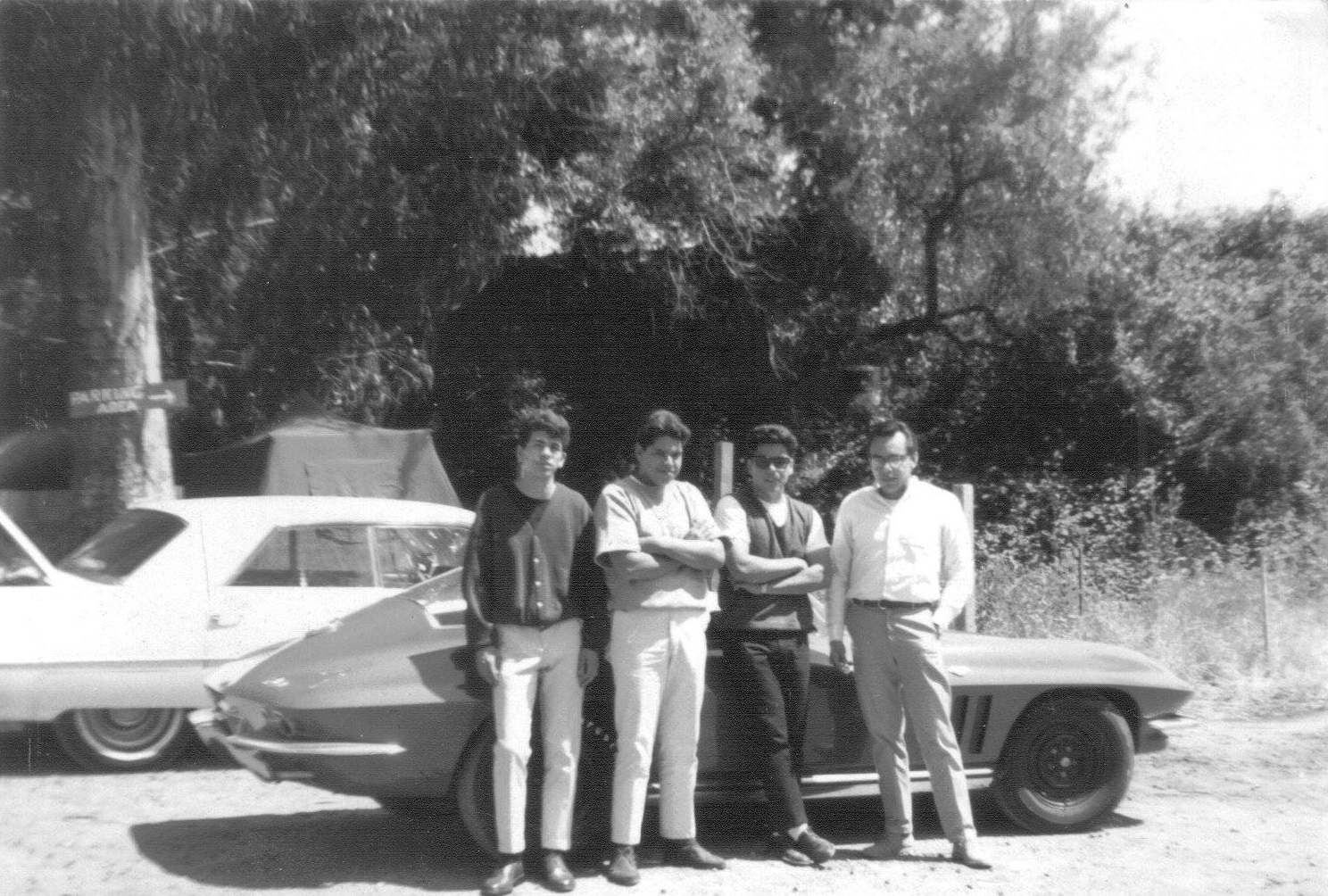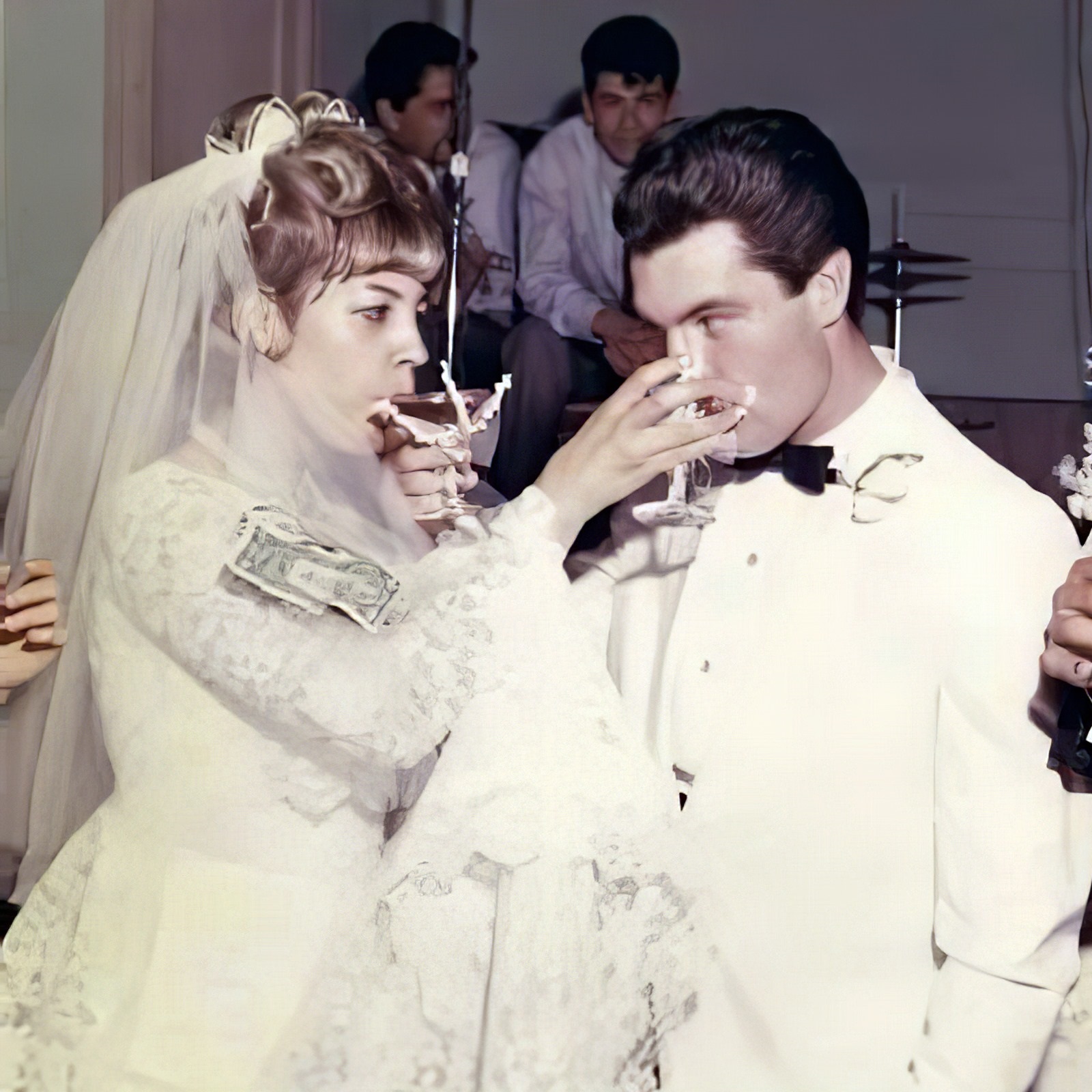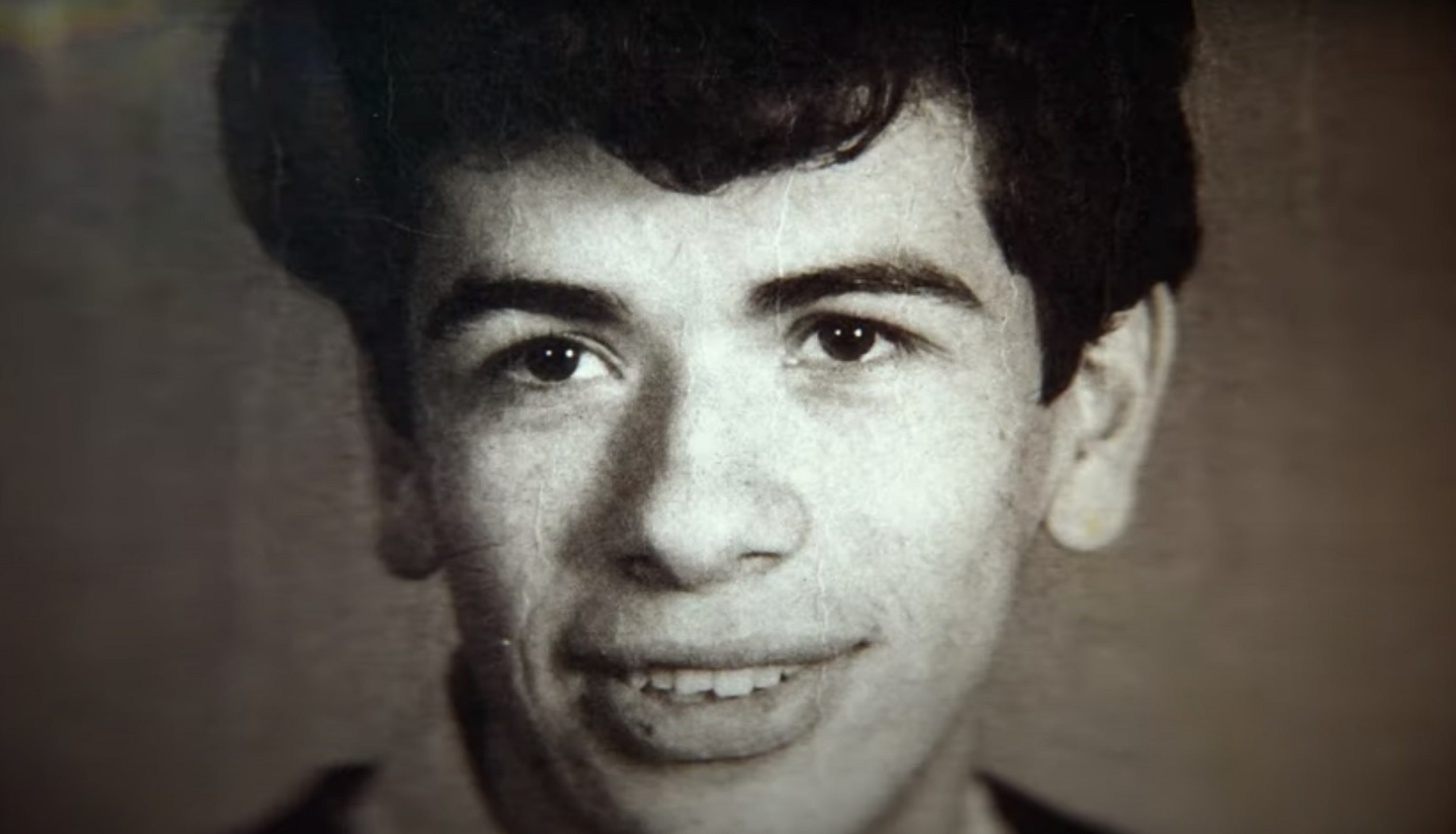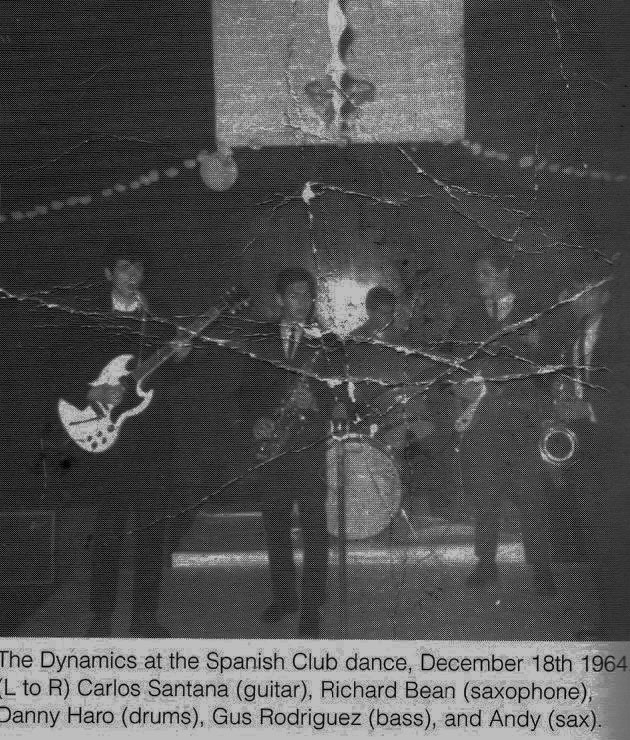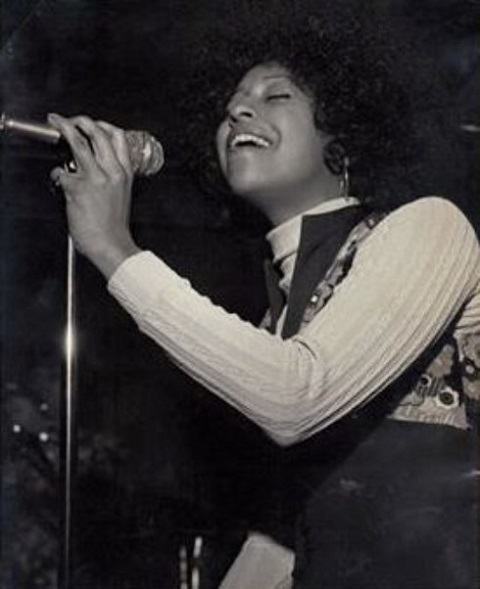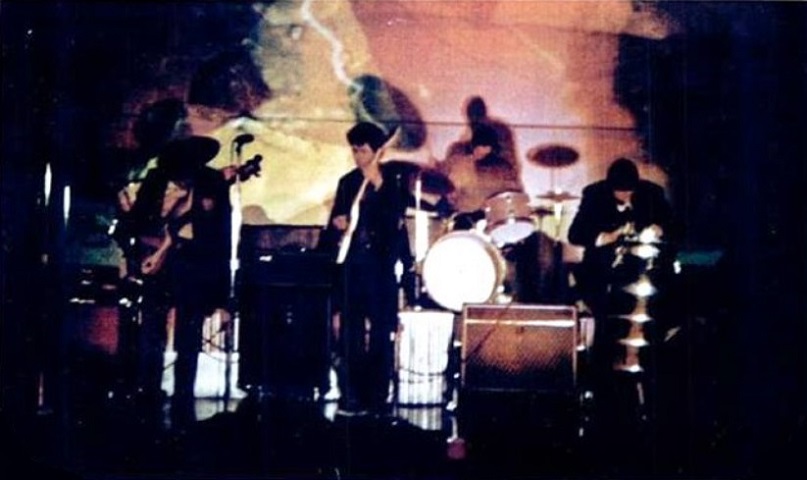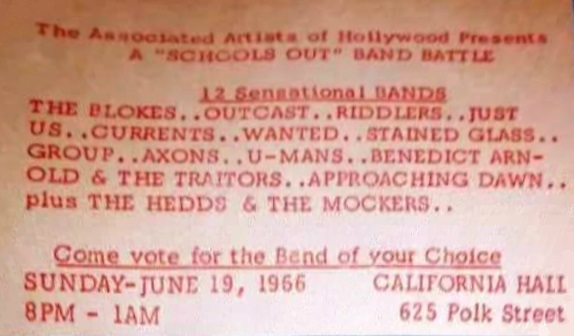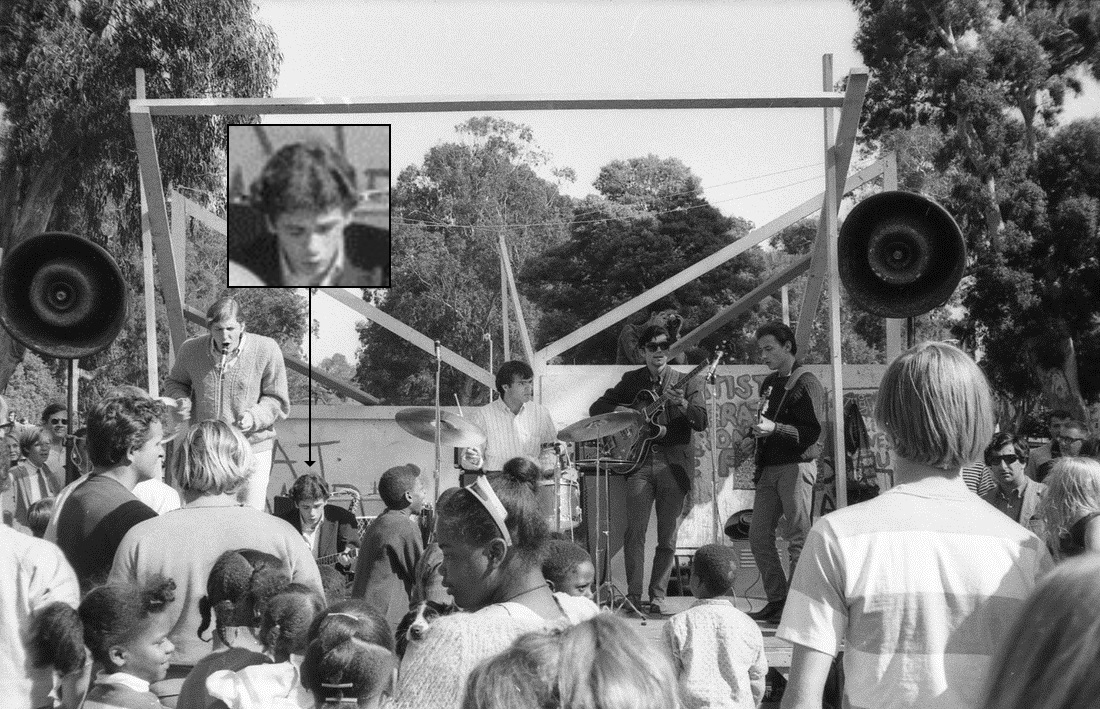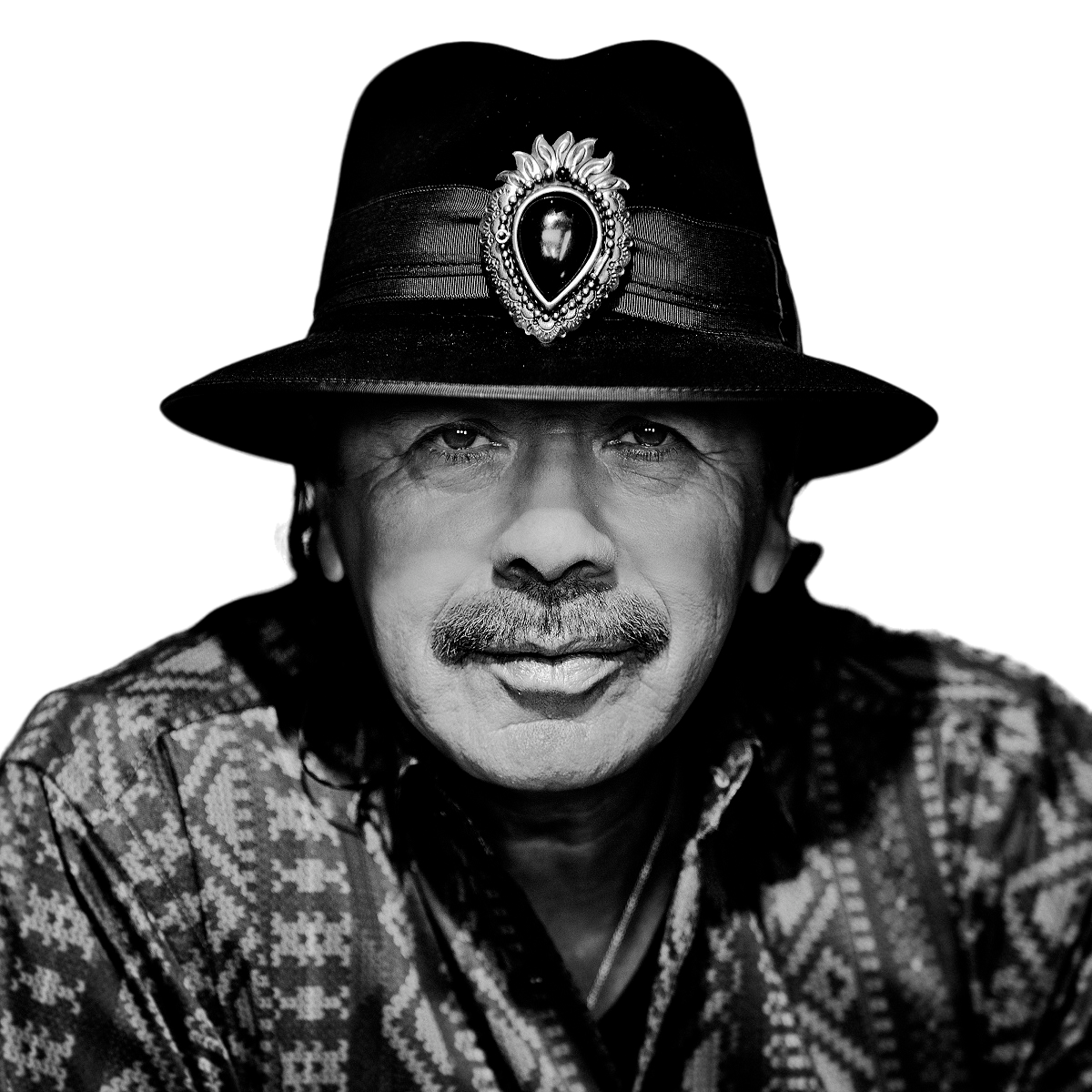|
🔔 July 20, 1947 Sun: Birth. Calle Angel Martinez N° 22, Autlan De Navarro, Jalisco, Mexico Note: Carlos Humberto Santana Barragán is born on Sunday July 20, 1947 at 2:00 a.m. He is the son of José Santana and Joséfina Barragán. José Santana and Joséfina Barragán Santana have seven children: Antonio, Laura, Irma, Carlos, Leticia, Jorge, and Maria. Quote from Carlos Santana (The Universal Tone 2014): I was born on July 20, 1947. My dad wanted to name me Geronimo. I would have loved it, personally. It was because of his Indian heritage---he was proud of that. (…) My given name was Carlos Umberto Santana until I dropped the middle name Umberto. (…) My full name now is simply Carlos Santana. (…) My memories of Autlan are those of a child. I was only there for my first eight years. (…) We lived in a few different houses in Autlan, depending on how dad was doing bringing in the money. (p17-18-19) Quote from Carlos Santana (The Universal Tone 2014): In Autlan, I was old enough to understand that my father was a musician, that he made a living playing the violin and singing. (p25) Quote from Carlos Santana (Richard B. Simon/Carlos Santana The Healer/Relix Vol 32 No 6 Sept/Oct 2005): My father was probably the musician in that town. Every time he played, women would go crazy. With the violin, I saw how people adored him, literally. Old people, young people, of course women. And I said, that’s what I want to do, and what I want to be. |
||||||||||
|
||||||||||
|
||||||||||
|
||||||||||
|
||||||||||
|
🔔 Autlan De Navarro, Jalisco, Mexico Note: Carlos Santana is in grade school. |
|||||
|
🔔 Carlos Santana’s Father Moving To Tijuana, Baja California, Mexico Note: Looking for better job opportunities, José Santana goes to Tijuana, but the rest of the Santana family stays in Autlan. Quote from Carlos Santana (The Universal Tone 2014): When I was seven years old, our family was as big as it was going to get, and things began to get really tough. (p27) Quote from Carlos Santana (The Universal Tone 2014): The end result was that my dad stayed away from Autlan more. He was making less and less money in the towns around Jalisco, and he didn’t like Mexico City, so he started to travel farther away, as north as Tijuana, on the border of the United States. It was the mid-1950s, and Tijuana was a big party town with lots of work for musicians. (…) After a while it seemed like he was always gone. (p34-35) |
|||
|
🔔 Aug 7 or 14 or 21 Sun: Moving To Tijuana, Baja California, Mexico Note: Josefina Santana and the rest of the Santana family go to Tijuana. Carlos Santana learns the code of survival in the streets of Tijuana. He attends Escuela Miguel F. Martinez. Quote from Carlos Santana (The Universal Tone 2014): When I was eight, we hadn’t seen my dad in almost a year, and we had gone from living in the middle of Autlan to living in the worst neighborhood in the area, just a few blocks from the edge of town. (…) When a letter containing a big check came from my dad, my mom had had it. It was time to leave Autlan. (…) To my mom, Tijuana was America. We were going to join dad, and we were going to America. That was the road we took (p36-37) Quote from Carlos Santana (The Universal Tone 2014): The trip from Autlan to Tijuana took place in August of 1955, just after my birthday, and we traveled for almost five days. (p40) Quote from Carlos Santana (The Universal Tone 2014): Dad got hold of somebody he knew and found a place for us to stay. (…) Colonia Libertad. (…) We had gone from the ghetto in Autlan to the ghetto in Tijuana. (…) Despite the circumstances, it was actually a nice transition from small town Autlan to Tijuana. It was new, exciting, and different. (…) I also remember that I started hearing more music than I had ever heard before. Right across the street was a restaurant with a very loud jukebox (p42-43-44) Quote from Carlos Santana (The Universal Tone 2014): From the moment we got to Tijuana, we started to learn to survive another way, too---it was time for all of us to go to work, to start supporting the family. (p48) |
||||||||
|
||||||||
|
||||||||
|
🔔 Learning Music Note: José Santana teaches his son different instruments, and finds him teachers to help him learn how to play violin Quote from Carlos Santana (The Universal Tone 2014): Around 1956, just as my dad’s father did with him, my father decided it was time for me to learn an instrument. (…) I was nine when my dad put me in a music school that I went to every day after school. Originally I wanted to play saxophone---but I would have had to learn clarinet for a year first, and I was young and wanted to shout and scream! My dad tried to teach me violin, but it was too difficult. Then he tried to get me learn the cornéo, the same instrument my grandfather had played…eventually he realized that I didn’t have a love for the horn, so we went back to a small violin---three-quarter size. (…) My dad was a good teacher, but he wasn’t necessarily gentle. (…) My dad acceded to my mom’s request and found me a teacher---actually two guys. (…) I started going to their houses, which were nearby, to get tips on holding the bow and other things. (p57-58-59) |
♥ “Mr. 50 cents a Song” Trio Carlos Santana (violin), ? (acoustic g), ? (acoustic g) Note: José Santana persuades his son to join two kids, and to play for money in the streets of Tijuana. Quote from Carlos Santana (The Universal Tone 2014): Feeling the music was the first lesson, but money was a big part of it for my dad. He persuaded me to join up with two brothers who both played acoustic guitars, go out on the street, and make some money. I can’t remember their names, and we didn’t have a name for ourselves, but they were good. (…) We would walk up and down Avenida Revolucion, or take the bus to Tecate or Ensenada, and approach people.”Song mister? Fifty cents a song.” (…) We were good, and it was a good experience---my first band. (…) But one of the best lessons I learned from working with those two was how to carry a melody---how important that is on any instrument, an absolute must. (…) The other thing I got from playing with the brothers was confidence. I started to feel good about my playing and about doing it in public. My father saw this and started to enter me into little music contests around Tijuana. (…) Most of the time I competed with mariachi singers---but one time when I must have been thirteen or fourteen it ended up that my sister Irma and I were the only ones not eliminated at the end of a contest. (p60-61) |
||||
|
♥ Los Cardinales Note: On various occasions, Carlos Santana sits in with his father’s mariachi band Los Cardinales. Quote from Carlos Santana (The Universal Tone 2014): My dad knew his position, how to work hard. (…) Soon he had me playing with his band on some shows. (…) There’s a photo from around this time of my dad and me with a bunch of musicians, all dressed up. (…) I remember that the occasion was something like a twenty-fifth anniversary, a one-time thing, not a regular gig. We were playing waltzes and Italian ballads. (p63) |
||||
|
🔔 Introduction To American Music Note: Carlos Santana is developing his own taste in music, and starts being attracted to the sounds of American music and blues in particular. Quote from Carlos Santana (The Universal Tone 2014): I was just ten when I first saw the influence of Mexico north of the border. I remember my dad rented me a mariachi suit---size small, but still too big. Then he took me with his band to play in Pasadena, which was around a three-hour drive from Tijuana back in 1957. This was the night before the Rose Parade, so the whole town felt like it was ready for a party. We performed for Leo Carillo. (…) But this joint on the other side of Tijuana was something else. It wasn’t just the music---it was the whole scene, because in fact we were playing in a place where the style of music didn’t even matter. (…) I had to answer my dad straight right then, man to man, when he started picking on my taste in music. “Look at where we are and what we’re playing. Could the music I like be worse?” He looked at me and didn’t try to hit or spank me. But he got really angry. (p68-69) Quote from Carlos Santana (The Universal Tone 2014): By 1958 I had sold my last pack of gum and shined my last pair of shoes and started earning money exclusively from making music. I stayed with the violin for almost six years, on and off, from 1955 to 1961. (…) I was beginning to develop my own taste in music. (…) But back then, I was just opening the door for the first time, checking out this Americano music, and learning in the direction of early rock and roll and rhythm and blues. (p66-67) |
|||||
|
|||||
|
|||||
|
|||||
|
🔔 Fall: Carlos Santana’s Father Moving To San Francisco, CA Note: José Santana goes to San Francisco, but the rest of the Santana family stays in Tijuana. Quote from Carlos Santana (The Universal Tone 2014): My dad was the one with taste and practicality. (…) My mother was pushing him to find better opportunities---pushing him north again, just as she had done in Autlan. The next thing I knew he began to go to San Francisco to play. (…) Then he was gone, and I stopped playing the violin. (…) I also never really liked the tone I got on the thing. (…) So I decided to give music a rest and play hide-and-seek with Rosa and just be normal with the rest of the kids. (p69-70) |
||||
|
🔔 Summer: Meeting Javier Batiz Note: Carlos Santana’s life changes as he discovers the music played by Javier Batiz and his band Los TJs. Quote from Carlos Santana (The Universal Tone 2014): In the summer of 1961 my dad had been up in San Francisco for almost a year, and my mom could see I had lost interest in playing music. (…) One afternoon she grabbed me and said, “Mijo, come here---we’re going to the park.” (…) I could hear the music even before we got there. (…) We walked into the park, and I saw a band doing its thing with funky amplifiers and electric guitars and a booming bass sound. (…) It was like a UFO had landed in my backyard. (…) It was Javier Batiz. (…) I remember thinking, with all my teenage conviction, “This is what I want to be. This is what I want to do for the rest of my life.” (…) I started following Javier around---I became his shadow. (p73-74) |
|||||
|
🔔 First Guitar Note: José Santana sends his son his first guitar. Quote from Carlos Santana (The Universal Tone 2014): My mom immediately sent a letter to my dad telling him that Carlos found this music that he loves, that he’s following around this musician like a puppy dog, and he wants to learn electric guitar. She asked him to get one for me if he could afford it. (…) It was a big, fat Gibson. (p75) Quote from Carlos Santana (The Universal Tone 2014): Once I got turned on to the electric guitar, my whole world started to shift and change. (…) The first melody I learned to play all the way through was “Apache”, an instrumental by The Shadows, an English group. I really got that one down and loved it---so much that it became my nickname for a while. “Ahi viene El Apache,” they’d say---here comes El Apache. (…) Long before I played in any club, I had the chance to sit in and watch the TJs’s rehearsals. (…) Of course I wanted to play with the TJs. (…) They had their regular gig at El Convoy, on the main strip. But they were already a unit. I hung out and sometimes sat in with them, but mostly it was just hanging. (p77-78) |
♥ The Strangers Carlos "El Apache" Santana (b/g), Manuel Delgadillo (g), Antonio Vargas “El Bolas” (ds), Jorge Burgos (g), Bibi (g) Note: Carlos Santana plays bass and guitar with The Strangers. He also sits in at El Convoy. Quote from Carlos Santana (The Universal Tone 2014): People began to hear that I could play. I sat in a few times with Javier and the TJs at El Convoy and started to meet other musicians and bands who played there, like The Strangers. The leader of the Strangers was Manuel Delgadillo. (…) At one point he needed a bass player, and he asked me if I wanted to give it a try. I already knew how to play violin, which also has four strings, so I was ready to do that. (…) Then we had our first gig---it was either the Aloha Club or Mike’s Bar---but we never got paid. (…) I continued to rehearse with the Strangers anyway, but every time we did someone would tell me that I played too many notes for a bass player---I was beating up Manuel! He decided to let me start playing guitar, and we kept rehearsing. Meanwhile, I was sitting in more at El Convoy, playing with their house band---not the TJs---and I started to get good at it. (…) The one thing I remember is that I was allowed to play the club’s guitar. (p80-81) |
||||||||
|
||||||||
|
♥ Javier Batiz And The TJ's Note: Carlos Santana plays bass with the TJs for a short period of time. Quote from Carlos Santana (The Universal Tone 2014): I also remember clearly that not long after that I ran into Javier on the street. He told me he was leaving El Convoy, moving to a better gig at the Club Latino Americano, and did I want to go with him and play bass? What could I say? The TJs were the first band I wanted to play with, so I said okay. (p81) |
||||
|
♥ El Convoy House Band Note: Carlos Santana plays guitar with El Convoy house band. He starts playing the blues. Quote from Carlos Santana (The Universal Tone 2014): The job with Javier didn’t pay as much---and I wanted to play guitar. So I put down the bass, left Javier, and went back to El Convoy. (…) Within months I could tell I was getting better, and I started to get confidence. (…) Maybe it was because I could do so many things with the guitar that I never felt like singing (p81-82) Quote from Carlos Santana (The Universal Tone 2014): Over time you start to learn about it---you learn to understand that the blues is a very sacred language. (…) I see the blues as a lake---you can look across it, travel around it, get to know it quickly. But you have to really dive into it, because it can be very, very deep. (p84-85) Quote from Carlos Santana (The Universal Tone 2014): As time went by, I got more and more into the blues---black blues. (p87) Quote from Carlos Santana (Richard B. Simon/Carlos Santana The Healer/Relix Vol 32 No 6 Sept/Oct 2005): In Tijuana, I learned a lot about stripping women, literally, with the music. You play music like The Stripper, that’s when they throw the glove off and they do the thing with the tassles on the nipples and stuff. Honky-tonk, the stripper song, Green Onions, Hideaway. I did that on the weekdays, and on Sundays, I would go and play Ave Maria in church with the violin. So my life was pretty balanced. |
||||||||
|
🔔 Summer: Moving To San Francisco, CA Note: The Santana family gradually moves to San Francisco. Carlos Santana goes to James Lick Middle School. Quote from Carlos Santana (The Universal Tone 2014): By the beginning of 1962, I was playing all the time and learning fast. I had the steady gig at the Convoy, and it was a real high watching the music taking shape. (…) I was also back to playing my first instrument. Part of my deal with my mom when I first got the guitar was that I would get out my violin again and play as part of the church service every Sunday. (…) I did that for almost half a year to appease my mom while I was getting stuck on the guitar. (…) By the time I was the featured guitarist at El Convoy, I was making nine dollars a week. (p90-91) Quote from Carlos Santana (The Universal Tone 2014): By summer of 1962, those two parts of my life just didn’t balance out anymore. It had not been easy playing music and going to school at the same time, so I eventually dropped out. (…) Meanwhile my dad was back in San Francisco again and had Jorge with him. (…) As my mom had done in Autlan, she was still thinking El Norte. (…) But I was older by then, and I wasn’t ready. (p94) Quote from Carlos Santana (The Universal Tone 2014): My father was the advance scout for the family---he was the first to check out San Francisco around 1960, playing for a few months, then coming back. By the following year, he found a steady work at the Latin American Club in the city’s Mission District. (…) With the help of the club’s owner, Tony Mares, he put together one of San Francisco’s first serious mariachi bands. (…) He got tight with Tony and his wife, and they eventually became our sponsors, helping us come to America. (…) My mom and dad had a plan for the whole family, and in 1962 they started to put it into action---there was no stopping them. (…) First my dad and Jorge went up north in the middle of the summer in 1962, staying in a small room above the Latin American Club. (…) I held out till the end of summer, playing at El Convoy. (…) Then my mom came back from San Francisco with Tony to get me, and that was that. (…) There was not much in San Francisco in 1962 to change the fact that I wasn’t happy. Not at first anyway. I went from working as a full-time musician on the street to being a full-time student in the local junior high school---James Lick Junior High on Noe Street. (p97-98-99) |
|||||||
|
|
Carlos Santana (g), Sergio “Gus” Rodriguez (b), Danny Haro (ds) Note: Carlos Santana stays in San Francisco for two months. He meets Danny Haro and Sergio “Gus” Rodriguez with whom he forms an unnamed band, and plays his first gigs in the U.S. Quote from Carlos Santana (The Universal Tone 2014): It was during these two months in ’62 that I also met two Mexican American guys who lived in the Mission District and were into some good music. One was Sergio Rodriguez, who played bass---we called him Gus. (…) The other was Danny Haro, who played drums. (…) We got together a few times to jam, and they were freaking out because I knew all these songs and I could play chords and a lot of lead. (…) I think we did two gigs together, but it didn’t feel anything like the gigs I was used to playing on Avenida Revolucion. (p102) Quote from ? (SFGate March 21, 2004): RODRIGUEZ, Sergio "Gus" - April 2, 1948 - March 3, 2004 Gus Rodriguez, 55, passed away on March 3, 2004 in Stockton. He was born in Guadalajara, Jalisco, Mexico on April 2, 1948. Gus and his family moved to the United States venturing on new hopes and dreams when he was 10. Early in his teens Gus formed a band with his brother, Al and friend, Danny Haro that eventually became part of The Santana Blues Band featuring good friend, Carlos Santana. His friends from all over the Bay Area loved him because "Gus was always there" for them. |
||||||||
|
||||||||
|
🎫 Sept or Oct: Salon MX, Mission Street between 22nd and 23rd Streets, San Francisco, CA Note: One of the few shows played in San Francisco, CA by Carlos Santana’s first unnamed band, featuring Sergio “Gus” Rodriguez and Danny Haro. |
🔔 ♥ Oct 31 Wed: Returning To Tijuana/El Convoy House Band (resuming) Note: On Halloween night of 1962, Carlos Santana returns to Tijuana and resumes playing with El Convoy house band. Quote from Carlos Santana (The Universal Tone 2014): Two months into that first school year in the United States, I really got into it with my mom. (…) I saw a Stratocaster that I actually liked, and I asked my mom for the money. (…) My mom told me she had spent all the money. (…) That’s when I said, “Forget it. You broke a promise to me. I’m going back.” (…) We drove all the way to Tijuana and pulled into town in the middle of the evening. (…) I did something I never expected I’d do on my own---I went to church. (…) On that night I went straight from the church to El Convoy. (p105-107) Quote from Carlos Santana (The Universal Tone 2014): I learned many things during my year in Tijuana---songs, solos, chord changes. I learned what I had to do to stay in tune. (…) I started to learn about phrasing. (…) I began to really learn about soloing and respecting the song and the melody. (p109-110) Quote from Carlos Santana (The Universal Tone 2014): I got used to the rhythm of late nights again. (…) I knew it was not healthy living. (…) But I was drinking a lot, and it started catching up to me quickly. (…) In my mind I wasn’t just playing the blues---I was living the blues. (p110-111) |
🔔 Late Aug: Returning To San Francisco Note: Carlos Santana returns to San Francisco and starts his second year at James Lick Middle School. Quote from Carlos Santana (The Universal Tone 2014): By the summer of 1963, I was getting older, almost sixteen. Things were changing on Avenida Revolucion. (…) During this time I think my family had been trying to reach me for a while. (…) I did not want to go back. (…) The way I remember it is that my mom, Tony, and his friend Lalo suddenly were there, and I fought going back till the end. (…) They basically kidnapped me---snatched my ass, put me in the car, and brought me back to San Francisco. (p112-113) Quote from Carlos Santana (The Universal Tone 2014): Being back in San Francisco was rough for a while. (…) My dad tried to make me feel better. (…) But school? My mind was always somewhere else. The one thing I remember I liked to draw. (p116) Quote from Carlos Santana (The Universal Tone 2014): In 1963 and into 1964, I was getting to know everything going on in San Francisco. (…) It sounds like I’m avoiding talking about school, that’s because I was doing just that---avoiding it. (…) My English was getting better all the time on its own. (…) I would say it took me almost three years from the time I came back from Tijuana to really get my English together and to stop thinking in Spanish. (p122-123) |
🔔 Working At The Tic Tock Drive In No2, 3rd Street, San Francisco, CA Note: After school, Carlos Santana works at the Tic Tock Drive In No2. Tic Tock No1 was located on Ocean Avenue and No3 on Colombus Avenue. Today, the 3rd Street location is used by a McDonald’s franchise. Quote from Carlos Santana (The Universal Tone 2014): Tony came into our room with his buddies. (…) One of them---it was Lalo, actually---sat on the bed, right on top of my guitar---snap! Broke it in two. (…) That happened on a Friday. The next Monday when I got home from school, Tony had bought me a brand-new guitar and an amplifier. It was a beautiful white Gibson SG with a whammy bar. (…) Then he said, “Hey, Carlos, I just made the down payment. You’re going to have to pay for the rest of it. I’ll take you to the place where I’m working so you can learn how to wash dishes and earn the money to pay it off.” That’s how I began my career as a dishwasher at the Tic Tock Drive In. (p117-118) |
||||||
|
||||||
|
♥ Fall: Unnamed Band #1 (resuming) Carlos Santana (g), Sergio “Gus” Rodriguez (b), Danny Haro (ds) Note: Carlos Santana resumes playing with his two friends that he met the year before, Haro and Rodriguez. Quote from Carlos Santana (The Universal Tone 2014): And of course I was still playing and hanging out with Danny and Gus. We had our little band that had no name. We had our little gigs, playing parties and dances. (…) We did one gig at the Stonestown YMCA... (p121-122) Quote from Carlos Santana (The Universal Tone 2014): After the difficulty I felt leaving Tijuana, what really kept me interested in San Francisco and not wanting to go back was my relationship with girls and music. (p125) |
||||||||
|
🔔 Sept: Mission High School, San Francisco, CA Note: Carlos Santana goes to Mission High School. Quote from Carlos Santana (The Universal Tone 2014): In September I moved on to the high school that James Lick was a feeder for---Mission High. (…) Mission was a big change from James Lick. It was really, really mixed. (…) My circle of friends got larger. (…) I remember that year Freddie Stone---Sly’s brother--- came over Jefferson High and played for us with his band, Freddie and the Stone Souls. (…) That was the first time I heard Greg Errico on drums. (p127) |
||||
|
||||
|
||||
|
♥ Sept: The Dynamics Carlos Santana (g), Sergio “Gus” Rodriguez (b), Danny Haro (ds), Richard Bean (sax), Andy Vargas (sax) Note: Carlos Santana’s unnamed band becomes one of the best in the Mission District. They eventually team up with another band named The Dynamics. Quote from Carlos Santana (The Universal Tone 2014): By then my band was one of the best bands at Mission at the time. Like a rhythm section for hire, the three of us would join up with other groups. (…) We were the guys to get. (…) One time we played in the Dynamics, wearing suits and playing with two saxophone players---Andy Vargas and Richard Bean. (p128) Quote from Richard Bean (Private Facebook Chat with Santanamigos Feb 20, 2012): The members of that band were local musicians who were not that dedicated and that’s why it broke up. My good friend Andy Vargas was the other sax player as well as myself in the band. Carlos went on to form the Santana Blues Band, and I went on to help form Malo and Sapo not much longer there after. |
|||||
|
♥ Late 1964: Unnamed Band #2 Carlos Santana (g), Sergio “Gus” Rodriguez (b), Danny Haro (ds), Joyce Dunn (vo) Note: Carlos Santana’s unnamed band teams up with a female singer. Quote from Carlos Santana (The Universal Tone 2014): The school used to hold open auditions for their Friday night dance parties, and we would win again and again. (…) We never really had a singer. (…) I met Joyce Dunn at a jam in late ’64---she was a singer singer, with a real blues energy to her voice. (…) It was definitely a new thing at the time---a black singer backed by Mexican Americans and a Mexican guitar player. Michael Carabello would tell me that the first time he ever saw me play was during the few weeks we played with Joyce. (p129-130) |
||||
|
🎫 Summer: Battle Of The Bands. Cow Palace, San Francisco, CA Note: Carlos Santana’s unnamed band featuring Joyce Dunn almost wins a local band contest. Quote from Carlos Santana (The Universal Tone 2014): The first half of ’65 went by fast---Suddenly my first year of high school was over, and it was summer. Many biographies that I have seen say I graduated from Mission High that year, but I graduated with the class of ’67. (…) Sometime that summer we heard that KDIA, which was the soul station for San Francisco back then, was sponsoring a band contest at the Cow Palace. (…) Many got eliminated in the first round, and we got more and more excited as the day went by. We also got nervous. Because we had so much time to hang around, Danny, Gus and I got to drinking, and we fucked it all up! We made it to number three. It felt good---until we lost. (p130) |
🔔 Sept: Mission High School, San Francisco, CA Note: Carlos Santana starts his second year at that school. |
|
Carlos Santana (g), Sergio “Gus” Rodriguez (b), Danny Haro (ds), Michael Carabello (perc) Note: Carlos Santana starts his second year at Mission High. His unnamed band includes a conga player for the first time. Quote from Carlos Santana (The Universal Tone 2014): That fall, I met Michael Carabello for the first time. He was a friend of Yvonne’s and would have been at Mission High except that his baseball skills got him into San Francisco Polytechnic. (…) He was hanging out more than playing at the start, but we had the same enthusiasm and intensity about music. (…) Most important, Carabello took me to Aquatic Park. (…) They used to let this circle of conga players play. (…) By the end of ’65, the influence of all these new musical ideas was starting to show in the band’s repertoire---and Carabello was in the band. (p131-132-133) |
||||
|
🔔 ?: San Francisco, CA Note: Carlos Santana becomes a naturalized American citizen. |
♥ Early June: Unnamed Band (Ex-The Mockers) Carlos Santana (g), Steve LaRosa (b), Rod Harper (ds) Note: Carlos Santana teams up with two other musicians who left a local band, The Mockers. Quote from Carlos Santana (The Universal Tone 2014): The band’s name was Mocker Manor, and they needed a guitar player. (…) I gave it a try and wanted it to work. (…) I didn’t stay long with Mocker Manor. (p148) Quote from Steve LaRosa (Facebook Feb 17, 2014): My name is misspelled, but I played with Carlos and Rod pre-Santana days, 1966, in a band called The Mocker Manor Blues Band (yeh...I know! haha). I drove a ‘61 beige Impala. I’d pick-up Carlos where he worked at Tick Tock on 3rd Street, and stop by his house to get his guitar, then off to some gig or other: free concert in the Panhandle or Artist Liberation Front gig or whatever. Have an old tape of Carlos, Rod, me and (the late) Tony Lenzini playing some blues at Rod’s house on 19th and Noe. Great memories of playing the Fillmore, Avalon and Matrix, etc. Quote from Bruno Ceriotti (http://brunoceriotti.weebly.com/the-mockers--the-mocker-manor-blues-band.html): Steve LaRosa and Rod Harper split from The Mockers and went in search of a guitar player to form a new band together because Tony Lenzini didn't want to leave The Mockers and join them. Within weeks, Steve and Rod ended up at Don Wehr's Music City (where The Mockers used to hung out and bough equipment for years) and the owner, the late Don Wehr (also a drummer) told them he knew a guitarist named Carlos Santana (b. Carlos Umberto Santana, Sunday, July 20, 1947, at 2:00 a.m. Autlan De Navarro, Jalisco, Mexico). Steve LaRosa remembered that Don told them that Carlos would be a good fit, but Rod Harper remembered that actually Don told them he didn't think he would be a fit because he was pretty good but was very young and Mexican. Anyway, although Steve and Rod never heard of him, Don gave them Carlos' phone number and they contacted him and then picked him up at his job (at that time Carlos worked as dishwasher at the Tic Tock Drive In on Third Street and King Street). When they picked him up (in Steve's '61 beige Chevrolet Impala) Carlos had tomatoe sause spread on his chest and when they asked him why? he said his mother put it on him because he had a cold. He also had a white Gibson SG electric guitar and a little black Vox amp with him. On the way to Rod's house on 587 Noe Street at 19th Street, in the mostly gay Castro District, Carlos kept telling them how much of a fan he was of The Mockers and how he went to all their gigs. How he dreamed of playing with them and how this was like a dream come true. Steve and Rod were pretty full of theirselves and Carlos had pretty much blew their head up, so they weren't expecting much. However, after the as-yet unnamed trio began practiced in Rod's living room, playing some blues tunes and a few songs written by Steve, the former Mockers members were blown out by Carlos' guitar skills. Steve and Rod had only heard sounds like that from albums that were recorded in professional recording studios, but never from someone who just play a guitar plugged in a probably 6" speaker in someone living room! So, after that first rehearsal together, they knew immediately that Carlos was the perfect fit for them. Great chemistry. He was so special, they liked him, and he was great to be around. In the following weeks the trio continued to practiced in Rod's living room, but because Carlos did not have a car (he was too poor to buy one), it was always Steve who picked him up at the Tic Tock Drive In, and from then they'd go to where he lived with his family (a flat (two units: one upper and one lower) at 704 14th Street at Market Street, in the Upper Market neighborhood of San Francisco) to get his equipments, and then off to rehearse or play somewhere. |
🎫 June 19 Sun: Battle Of The Bands. California Hall, San Francisco, CA Quote from Bruno Ceriotti (http://brunoceriotti.weebly.com/the-mockers--the-mocker-manor-blues-band.html): Within a month since they got together, Steve LaRosa, Rod Harper and Carlos Santana played at a "battle of the bands" that was probably promoted by Don Wehr (according to Rod, Carlos didn't like Don at that time because he always thought Don was trying to show him up. In fact when they played at the California Hall, during the break, Don went up and did a drum solo, and Carlos turned to Rod and said, "see, he's always trying to upstage me".). The unnamed trio probably used an "ad-hoc" name for this gig (the only one they played as a three-piece), but neither Steve LaRosa or Rod Harper remember what. The remaining Mockers members, Tony Lenzini, Ken Olson, and Bob Bunn, were in the audience that night and were duly impressed. |
|||
|
♥ July: The Mocker Manor Blues Band Carlos Santana (g), Steve LaRosa (b), Rod Harper (ds), Tony Lenzini (rhythm g, vo) Note: Sahib Malik (hca, vo) plays with the band for a few days, from late September to early October. Rory Butcher (tambourine, vo) joins the band for two weeks, from early to mid October. Quote from Bruno Ceriotti (http://brunoceriotti.weebly.com/the-mockers--the-mocker-manor-blues-band.html): After seeing them at the above mentioned "battle of the bands", Tony Lenzini was blown away and quickly quit The Mockers and joined Steve, Rod, and Carlos, making them a quartet. Although Tony previously played lead guitar in The Mockers and was a much more well-rounded player, Carlos' solos were so incredible that Tony agreed to use his rhythm guitar skills behind Carlos' lead guitar skills, to give them a much bigger and better sound. Steve LaRosa have a tape of the as-yet unnamed quartet's first rehearsal in Rod's living room, with the band just playing some blues tunes and chatting. In the tape you can heard Tony playing an old borrowed acoustic guitar with a pickup on it, and Carlos playing his white Gibson SG electric guitar through his little black Vox amp. Carlos solos are youthful, exuberant and exciting. Easily identifiable as we've come to know his playing. And there was much talking between them, at times. At one point, Carlos can be heard asking whether they had a joint or some weed, which they almost always did! The tape, of approximately 30 minutes duration, started with an uptempo blues instrumental, then talking and tuning, then a long and slow blues instrumental, then talking and tuning again, and finally another uptempo blues instrumental that abruptly ends because the tape ran out while they were playing. The rehearsal was recorded using an old reel-to-reel recorder and a single condenser mic (all four instruments are very clearly heard). In 2015 Steve have converted the tape to digital file and send a copy to Carlos as a gift. In late July, some neighbors of the as-yet unnamed band had been complaining about the volume of their rehearsals at Rod's apartment, so they found a new rehearsal space, a huge house that looked like a big stone castle located on Clarendon Avenue in the Twin Peaks neighborhood of San Francisco. They asked the owners if they could use one of their street-level garages for their rehearsals and they agreed. It was the garage, that had been converted to a recreation/storage room, that inspired them to called their band The Mocker Manor Blues Band, because Steve, Rod and Tony came from The Mockers, they were playing in a "manor", and they wanted to be a blues band. Quote from Bruno Ceriotti (http://brunoceriotti.weebly.com/the-mockers--the-mocker-manor-blues-band.html): In December 1966, The Mocker Manor Blues Band disbanded after Steve LaRosa left them as he needed a "real" job to support a new young wife and child-to-be. Carlos Santana, nedless to say, when to form his own Santana Blues Band few months later (with Stan Marcum as manager), Rod Harper will play with other local bands included the above mentioned Santana Blues Band (1967), and the Allmen Joy (1967-69), and also Tony Lenzini will play with other local bands. Later in 1970 Steve returned to music (after he declined to joined Santana Blues Band back in 1967 only due to his family responsibilities) and teamed up with Rod and Tony again and they formed a new band together called Filet of Soul with singer and organist Billy Dunn (Rod left the band soon thereafter but they continued as a successful funk/originals club band for several years with a new drummer named Steve Koskela). |
|||||
|
🎫 Summer: Presidio, San Francisco, CA Note: Carlos Santana meets Stan Marcum and Ron Estrada, who will become the first managers of his band. Quote from Carlos Santana (The Universal Tone 2014): At one of those outdoors gigs playing at the Presidio, I had met two guys---Stan Marcum and Ron Estrada. (…) They just really dug our music. Stan was a barber, and Ron worked as a bail bondsman, and we all got friendly. (…) And later they became Santana’s first managers. (p148) Quote from Bruno Ceriotti (http://brunoceriotti.weebly.com/the-mockers--the-mocker-manor-blues-band.html): It was at that time that the band also hired a manager named Stan Marcum, a beatnik dude a bit older than they were, who worked as a barber. Stan was one of the people who would hang around The Mockers rehearsals and go to some of their gigs. Then, when Steve and Rod left that band to form a new one with Carlos, he would come over Rod's apartment to hang-out and listen. Finally, after Tony also joined them, Stan was hired as their manager and got them all the gigs they ended up playing in the following months. |
🔔 Sept: Mission High School, San Francisco, CA Note: Carlos Santana starts his third and last year at that school. |
🎫 Oct 1 Sat: 1st Artists Liberation Front Free Fair. Potrero Hill Public Housing Project, San Francisco, CA Quote from Bruno Ceriotti (http://brunoceriotti.weebly.com/the-mockers--the-mocker-manor-blues-band.html): In October the Artists Liberation Front (ALF) produced a series of fairs on four weekends in four different ethnic, low-income neghborhoods in San Francisco. They were called 'Free Fairs'. For the first time artists had gotten together, not to sell their art but to invite people to participate in the creative process. The artists set up kiosks with large rolls of paper and painting supplies. Kids (of all ages) could make their own art, while rock bands came to play. The Mocker Manor Blues Band were among the bands who played at these events (probably the first outdoors concerts of rock music history). They played in three of them, the first held in one of the two public housing projects in Potrero Hill, a residential neighborhood in the Mission District. Around that time an Afro-American guy named Sahib Malik, who sang and played blues harmonica, tried-out with the band for a short time but it just didn't work out, so this was his only gig with them. Also appeared civil rights activist, social critic, writer, entrepreneur, and comedian Dick Gregory, theatrical troupes El Teatro Campesino, the San Francisco Mime Troupe, and the San Francisco Calliope Company, plus a children dance troupe directed by Carol Landes, puppets theaters, and a local actor named Bobby Parker. |
🎫 Oct 2 Sun: 1st Artists Liberation Front Free Fair. Potrero Hill Public Housing Project, San Francisco, CA |
🎫 Oct 3 Mon: Open Auditions. The Matrix, San Francisco, CA Quote from Bruno Ceriotti (http://brunoceriotti.weebly.com/the-mockers--the-mocker-manor-blues-band.html): The Mocker Manor Blues Band did a non-billed audition set here soon after the above mentioned 1st ALF Free Fair. At that time Sahib Malik was still "with them" but he didn't actually play during The Matrix gig because Stan Marcum wasn't really infatuated with him and decided they wouldn't even tell Sahib about the gig. So, they did it as a quartet and Sahib was fired soon after. |
🎫 Oct 6 Thu: Lunatic Protest Demonstration - Love Pageant Rally. Panhandle Park, Golden Gate Park, San Francisco, CA Quote from Bruno Ceriotti (http://brunoceriotti.weebly.com/the-mockers--the-mocker-manor-blues-band.html): The Mocker Manor Blues Band played here along The Orkustra, Big Brother and The Holding Company, The Grateful Dead, The Wildflower, and (possibly) Joe Henderson Quartet. The bands played for free during an outside afternoon unauthorized protest demostration held in the park and organized by Allen Cohen (editor of the San Francisco Oracle) and fine artist Michael Bowen, with the help of local hippie communities (among them, the notorious The Diggers), after having learned from the news media that the US Government had just declared LSD illegal in California. |
|
Quote from Bruno Ceriotti (http://brunoceriotti.weebly.com/the-mockers--the-mocker-manor-blues-band.html): The Mocker Manor Blues Band played at the 2nd ALF Free Fair two-day event held at the Glide Foundation, a charity organization located into the Glide Church, in the Tenderloin, a neighborhood in downtown San Francisco. Also appeared Country Joe and The Fish, The Jerry Brexelli Band, and Mrs. Joseph P. Lacy III's Jug Band, plus thirty poets who read their own works (including Michael McClure, Laura Ulewicz, Greg Campbell, Adrian Ravarour, Janice Mirikitani, Joanna Katz, Jim Turner, Joan Robb, Larry Mamiya, Gina Cunningham, George Spuler, and Dee Barret), theatrical troupe The Committee, contortionist Bernie Orlando, and Arthur Lisch and his Instant Theatre. |
||||||
|
🎫 Oct 9 Sun: 2nd Artists Liberation Front Free Fair. Glide Foundation, Glide Memorial United Methodist Church, San Francisco, CA |
🎫 Oct 15 Sat: 3rd Artists Liberation Front Free Fair. Panhandle, Golden Gate Park, San Francisco, CA Incomplete: Jingo - Chim Chim Cheree Quote from Carlos Santana (The Universal Tone 2014): By the summer of ’66 the band was getting better, and I was getting a reputation. At one of our outdoor jams in the Panhandle I was taking a solo. I opened my eyes and recognized Jerry Garcia and Michael Bloomfield in the audience. (p147) Quote from Bruno Ceriotti (http://brunoceriotti.weebly.com/the-mockers--the-mocker-manor-blues-band.html): The Mocker Manor Blues Band played at the 3rd ALF Free Fair two-day event held in the Panhandle park from 10:00 a.m. to 10:00 p.m. The band played in the morning and probably only on Saturday 15, with a lineup augmented by Rory Butcher on vocals and tamburine, formerly of The Hedds. Rory tried-out with the band for a couple of weeks that month but, as with Sahib Malik, it really didn't work out so he left them right after this gig, the only one he played with the band (he later formed Womb). "At one of our outdoor jams in the Panhandle I was taking a solo". Carlos Santana remembered in his autobiography The Universal Tone, "I opened my eyes and recognized Jerry Garcia and Michael Bloomfield in the audience - they were checking me out, nudging each other with their elbows, and smiling about something". (Also in the audience that day there was future Boogie and The Rhythm Dukes' bass player John Barrett who taken a lot of photos of the event, including four of The Mocker Manor Blues Band onstage during their set....see below). Also appeared Quicksilver Messenger Service (Sunday 16), Country Joe and The Fish (Sunday 16), The Grateful Dead (Sunday 16), and The Wildflower. Quote from Steve LaRosa (Santana Blues Band Facebook Group Feb 24, 2017): That was the Artists Liberation Front Free Fair, aka the “Happiness Free Fair” on Saturday October 15, 1966. Quicksilver, Country Joe and the Dead were also on that weekend event. Stan Marcum was managing us and told us to clean-up for the gig. Why, I'll never know. But as you see, our hair was combed back and Carlos and I wore sport jackets. Rod and Tony were all spiffy. That was Rory's only performance with us. I vividly recall Jerry Garcia in the audience, with his jaw dropped, seeing/listening to Carlos for the first time. |
||||
|
||||
|
🎫 Oct or Nov: Avalon Ballroom, San Francisco, CA Quote from Bruno Ceriotti (http://brunoceriotti.weebly.com/the-mockers--the-mocker-manor-blues-band.html): The Mocker Manor Blues Band did a non-billed "audition" set here once. |
🎫 Nov 13 Sun: Fillmore Auditorium, San Francisco, CA Quote from Bruno Ceriotti (http://brunoceriotti.weebly.com/the-mockers--the-mocker-manor-blues-band.html): The Mocker Manor Blues Band did a non-billed "audition" set, opening for Country Joe and The Fish, Buffalo Springfield, and the headliner Bola Sete. Another local band called Raik's Progress also did a non-billed "audition" set before or after The Mocker Manor Blues Band. The show, from 2:00 p.m. to 7:00 p.m. was 'Presented in San Francisco by Bill Graham', and was kiddies free! |
|||
|
♥ Dec: Unnamed Band #3 (resuming) Carlos Santana (g), Sergio “Gus” Rodriguez (b), Danny Haro (ds), Michael Carabello (perc) Note: After the dismantling of The Mocker Manor Blues Band, and before starting the Santana Blues Band in early Feb 1967, Carlos Santana resumes playing with his two friends Haro and Rodriguez (with whom he started the Unnamed Band #1 back in Sept-Oct 1962), plus Michael Carabello. |
|
||||
|
|

